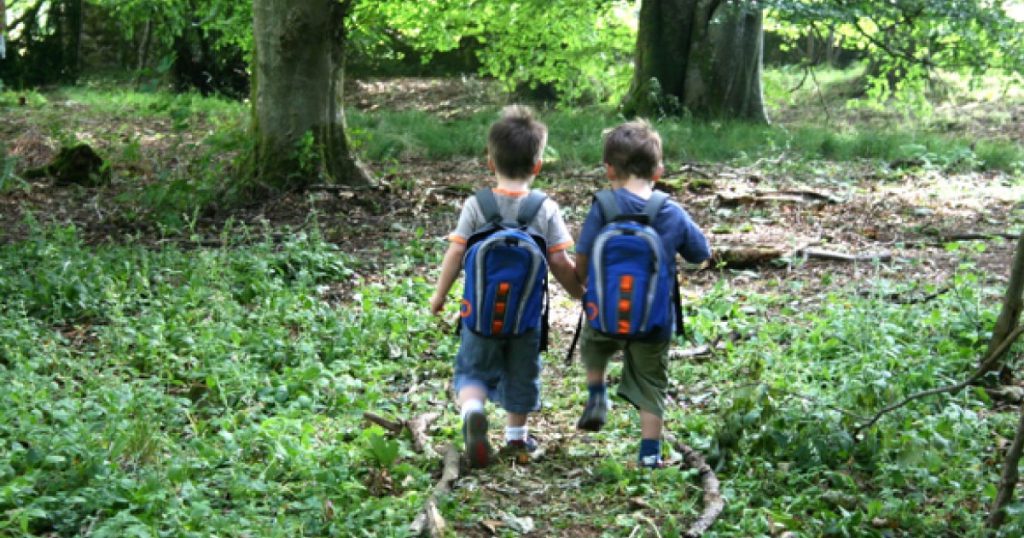
Through Australia’s bushfires, COVID-19 and a number of other highly stressful events in the past few years, educators, learning communities, families and children have shown resilience and supported each other’s mental health and wellbeing. However, the uncertainty, rapid change and accompanying feelings we might have experienced—anger, grief, loss, shame or the feeling of being overwhelmed, overloaded or frustrated—can also contribute to experiences of burnout.
In 1975, Herbert Freudenberger (as cited in Nagoski & Nagoski, 2020, p. xiii) first defined three components of burnout:
- emotional exhaustion—a fatigue from caring too much and for too long
- depersonalisation—depletion of capacity for empathy, caring, and compassion
- decreased sense of accomplishment—an unconquerable feeling that nothing you do makes any difference.
Burnout is highly prevalent. It is a universal experience, but also unique for each person. Many of us can intuitively imagine, empathise or understand what we might feel and experience in the midst of burnout.
The World Health Organization (WHO) (2019) classifies burnout strictly as an ‘occupational phenomenon’rather than an illness or medical condition. The WHO’s International Classification of Diseases describes it as ‘a syndrome conceptualized as resulting from chronic workplace stress that has not been successfully managed’ and adds:
It is characterized by three dimensions:
- feelings of energy depletion or exhaustion;
- increased mental distance from one’s job, or feelings of negativism or cynicism related to one’s job; and
- reduced professional efficacy.
Burn-out refers specifically to phenomena in the occupational context and should not be applied to describe experiences in other areas of life. (as cited in WHO, 2019, para. 3)
Reducing burnout risk
Addressing energy depletion and emotional exhaustion are essential in overcoming and preventing burnout. This also assists in reducing or removing feelings of negativity and the risk of experiencing depersonalisation and a reduced sense of accomplishment and professional efficacy.
Understanding the differences between stress and stressors and knowing how to complete your stress response cycles can help you address energy depletion and emotional exhaustion.
Stressors are causes of stress, which activates responses in our bodies. Self-regulation expert Dr Stuart Shanker (e.g., 2017) describes stressors as existing within five interrelated domains: biological, emotional, cognitive, social and prosocial. They could relate to our emotional or cognitive load, work, money, family, thoughts about the future, social and cultural expectations, physical health and environment, negative experiences such as discrimination or adversity, self-criticism, body image, identity or even memories.
In different ways and to different degrees, our bodies can identify these stressors as potential threats and respond accordingly. Stress responses involve neurological and physiological shifts in your body when you encounter threats (Nagoski & Nagoski, 2020, p. 5).
In their book Burnout (2020), Emily and Amelia Nagoski suggest that ‘dealing with stressors and dealing with the stress are two different processes, and you have to do both’ (p.23).
Sometimes we react to stressors in ways that support survival. While these reactions get us through the specific situations, they might also involve supressing or ignoring our stress-related feelings, and this prevents us from completing the stress response cycle. We are more prone to burnout when we fail to complete our stress response cycles, so completing them regularly is important for reducing burnout risk.
Moving through (and completing) stress response cycles
Completing the stress response cycle usually requires you to stop dealing with stressors and turn towards noticing how you are experiencing stress physically and emotionally. Here are strategies you can try:
- Move in ways that suit you. This might be intense physical exercise, team sports, dancing, rambling walks, water sports or low-impact stretching, contracting and releasing of muscles.
- Breathe deep and slow from your diaphragm, and try to down-regulate (consciously shift from ‘fight or flight’ mode to ‘rest and digest’ mode).
- Talk to people. Any friendly social interaction reminds us the world can be safe.
- Laugh—real belly laughs—with someone. This maintains social bonds and regulates emotion.
- Affectionately connect with loved ones, through talking, companionship or physical affection, in a safe and trusting context.
- Have a big cry and then a big sigh. This brings feelings of relief from the weight of the tear-inducing stressor. You may not change the situation or remove the stressor, but you will complete the stress response cycle.
- Get creative and express yourself. Art, performance and storytelling in all its forms enable the expression of big emotions.
Activities that support us to complete stress response cycles can incorporate more than one of these strategies. Different strategies might work better during different situations and times too. Have a few back-up options because it might not always be practical to use your preferred strategies.
Your body communicates that a stress response cycle is complete when you experience a shift in mood or mental state or physical tension. Your breathing might deepen and slow and your thoughts might relax or focus. This can suggest you are moving toward a calm state, or sustaining optimal energy levels required for the moment. It can be easier for some people to recognise when stress cycles are complete than others. If we tend not to feelour feelings, or hold them in, it can be trickier. The more we intentionally notice and listen to our body, and mindfully complete stress response cycles, the easier recognising completion becomes. No matter how incremental or marginal the shifts in your body might seem, they are important for reducing the risk of burnout.
Workplace considerations
Workplaces can create environments that support leaders and employees to address stressors and complete stress response cycles. In the workplace, there are also stressors we can’t remove. Consider changes to workplace processes and practices that might reduce the influence and impact of stressors. It is also worth considering the value of reassuring everyone that they have permission and support to safely feel and express feelings, complete stress cycles and address stressors in the workplace.
Our propensity for burnout is also influenced by our levels of workplace engagement commitment, workload and professional relationships. Engaging in work with meaning and purpose supports us to find joy or fulfilment in what we do, professionally and personally. This is important for wellbeing. Highly engaging work, however, can lead to unsustainable workloads and fatigue through over-commitment, or result in less engaging but nonetheless essential activity being left undone.
To support positive professional relationships, come from a position that communicates an understanding that everyone always does their best, and that our best is going to be different from moment to moment. During those times when our best is not our bestbest, we need to know we are encouraged to seek help and that we will be supported in doing so.
This kind of workplace support can be included in your Quality Improvement Plans and work towards meeting the National Quality Standard. Explore the Be You resource, Planning for Wellbeing: Mine, Yours, Ours, to further grow your skills and better understand how, as a learning community, you can individually and collectively support each other to identify, reduce or remove stressors, separate stress from stressors, and understand stress responses.
Additional resources
- Read the Be You resource, Planning for Wellbeing: Mine, Yours, Ours, as a PDF for download or an online flipbook.
- Listen to Amelia and Emily Nagoski discuss burnout and how to complete the stress cycle on the podcast, Unlocking Us with Brené Brown.
References
- Nagoski, E. & Nagoski, A. (2020). Burnout: The secret to unlocking the stress cycle.Ballantine Books.
- World Health Organization (WHO). (2019, May 28). Burn-out an “occupational phenomenon”: International Classification of Diseases. https://www.who.int/news/item/28-05-2019-burn-out-an-occupational-phenomenon-international-classification-of-diseases
- Shanker, S. (2017). Self-Regulation: 5 Domains of Self-Reg. Self-Reg What You Need to Know Series. The MEHRIT Centre. https://self-reg.ca/wp-content/uploads/2020/06/Infosheet_5_Domains_of_Self-Reg.pdf
ECA Recommends 
Early childhood educator wellbeing
Everyday Learning Series title
By Lisa Baker
This Everyday Learning Series title explores the questions: How often do educators actually think about supporting their own wellbeing? Do educators consider that, before they can facilitate children’s wellbeing, they need to look after themselves first? It is difficult for early childhood educators to work well, build relationships with colleagues, children or families, or be role models for the children they teach, if they are unwell, unhappy or burnt out. Whether educators work in early learning services, kindergartens, child care, family day care, outside school hours care or schools, their self-care is crucial in order to support children’s learning and development. Purchase your copy on the ECA Shop here.



